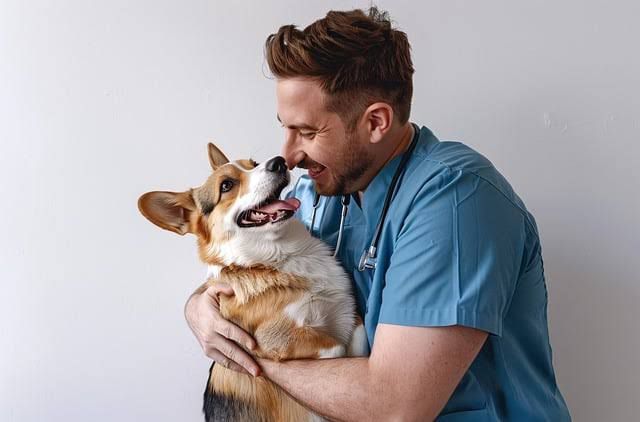Dog Care Tips at Home: A Complete Guide to Beginners
Taking care of a dog at home can be a fulfilling experience, but it also requires dedication to ensure their happiness and health. With a few essential tips, you can create a nurturing environment that promotes your dog’s physical and emotional well-being. Let’s dive into the details of providing the best care for your furry friend right at home.

Essential Supplies for Dog Care at Home:-
Before you bring a dog home or upgrade your current pet care setup, it’s important to gather some essential supplies. The basics include:
Food and Water Bowls:-
Choose bowls that are easy to clean and the right size for your dog.
Comfortable Bedding:-
Your dog needs a space to rest, so pick a cozy bed that’s suitable for their size.
Toys and Stimulation Tools: Toys are more than just fun; they’re vital for your dog’s mental and physical engagement.
Understanding Your Dog’s Dietary Needs:-
Diet is crucial to a dog’s health. It’s best to choose a high-quality, nutritionally balanced dog food and avoid table scraps, which can be harmful. You can consult your vet to find out the best food for your dog’s age, size, and breed.
Choosing Quality Dog Food:-
Look for food with real ingredients and avoid fillers.

Feeding Schedules:-
Dogs thrive on consistency, so stick to regular feeding times.
Avoiding Harmful Human Foods: Foods like chocolate, grapes, and onions are toxic to dogs.
Hydration for Your Dog:-
Water is essential for your dog’s health. Keep their water bowl filled with clean, fresh water, and check it frequently.
Signs of Dehydration to Watch For:-
Lethargy, dry gums, and sunken eyes can all indicate dehydration. If you spot these signs, offer water and monitor closely.
Creating a Comfortable Living Space:-
Dogs feel safest in a comfortable, familiar environment. Find a spot in your home where they can relax and feel secure.
Tips for Setting Up Your Dog’s Space:-
Choose an area free from loud noises and keep their bed, toys, and water accessible.
Regular Exercise and Physical Activity:-
Dogs need exercise to stay healthy and avoid boredom. Regular physical activity also helps prevent obesity and supports overall well-being.
Ideas for Indoor and Outdoor Activities: Go for daily walks, play fetch in the backyard, or even practice basic commands indoors.
Mental Activation and Playtime:-
Mental Activation is just as important as physical exercise. Interactive games and toys keep your dog sharp and entertained.
Games to Keep Your Dog Mentally Sharp:-
Hide treats around the house for a scent-based scavenger hunt, or use puzzle toys to make treat time more engaging.
Dog Grooming Basics:-
Grooming keeps your dog’s coat and skin healthy, as well as preventing any issues from mats or excessive shedding.
Regular Brushing and Coat Maintenance:-
Brush your dog weekly (or daily for long-haired breeds) to reduce shedding and prevent tangles.
Importance of Nail Trimming:-
Trim your dog’s nails regularly to prevent discomfort and ensure proper paw health.
Bathing Your Dog at Home:-
Bathing your dog is an important but often tricky task. Regular baths help keep their skin healthy, but over-bathing can lead to dryness.
Tips for a Successful Bath: Use lukewarm water, a dog-safe shampoo, and make sure to rinse thoroughly to avoid skin irritation.
Recommended Bathing Frequency: For most dogs, once a month is sufficient, but consult with your vet if your dog has specific skin needs.
Oral Hygiene and Dental Care:-
Taking care of your dog’s teeth is essential to prevent gum disease, which can lead to more serious health issues.
importance of Brushing Your Dog’s Teeth:-
Brush their teeth with a dog-safe toothbrush and toothpaste to maintain oral hygiene.
How to Keep Their Mouth Healthy:-
Offer dental chews and consider professional cleanings as recommended by your vet.
Understanding Your Dog’s Body Language:-
Your dog communicates through their body language. Recognizing these signals can help you meet their needs and ensure their comfort.
Recognizing Signs of Stress and Discomfort: Yawning, licking lips, or showing the whites of their eyes can all signal stress. “Read About Pet Care – Pet Grooming Tips Home”
How to Respond to Your Dog’s Signals: If you notice signs of anxiety, remove them from the stressor and provide reassurance.
Health Checks and Signs of Common Illnesses:-
Routine checks help you spot any health issues early. Keep an eye out for symptoms like loss of appetite, changes in energy, or unusual behaviors.
Monitoring Your Dog’s Health:-
Regularly examine your dog’s eyes, ears, and skin for any signs of infection or irritation.
Common Symptoms to Watch For: Vomiting, diarrhea, or lethargy are common signs that warrant a vet visit.
Providing Safe and Positive Training at Home:-
Training can be an enjoyable bonding activity, helping your dog understand boundaries and expectations in a safe way.
Basic Obedience Tips:-
Teach commands like “sit,” “stay,” and “come” using treats and positive reinforcement.
Importance of Positive Reinforcement: Reward-based training encourages good behavior without causing fear or stress.
Creating a Balanced Routine:-
Dogs appreciate consistency, so creating a daily routine is beneficial. This includes regular meal times, playtime, and a quiet time for rest.
Maintaining Consistency in Feeding, Exercise, and Rest:-
A balanced routine provides stability and helps reduce stress.
Disclaimer:- There could be some mistake in what we say and there could be some mistake in our gathering of information, so you must consult a doctor once. Read More Blogs Click Here..
